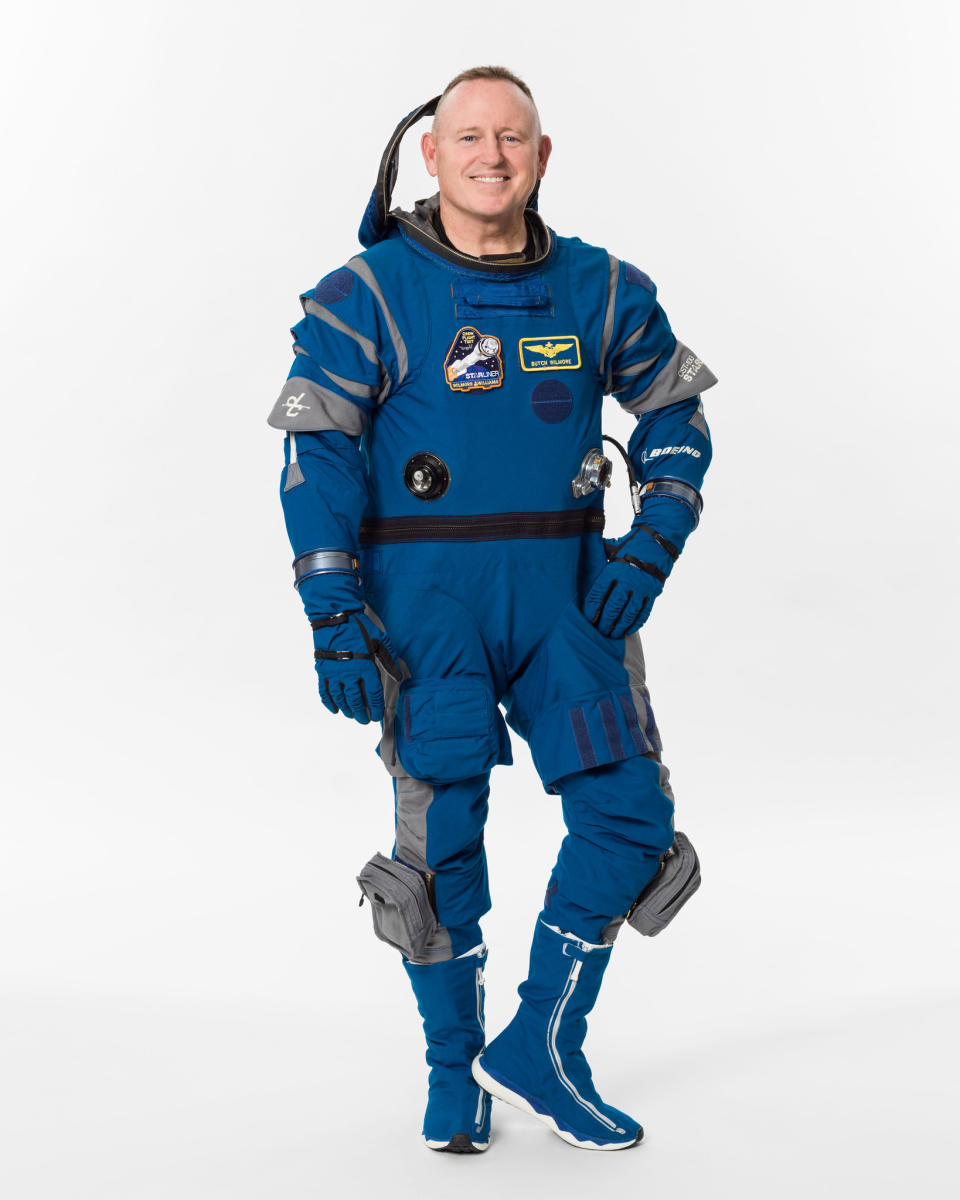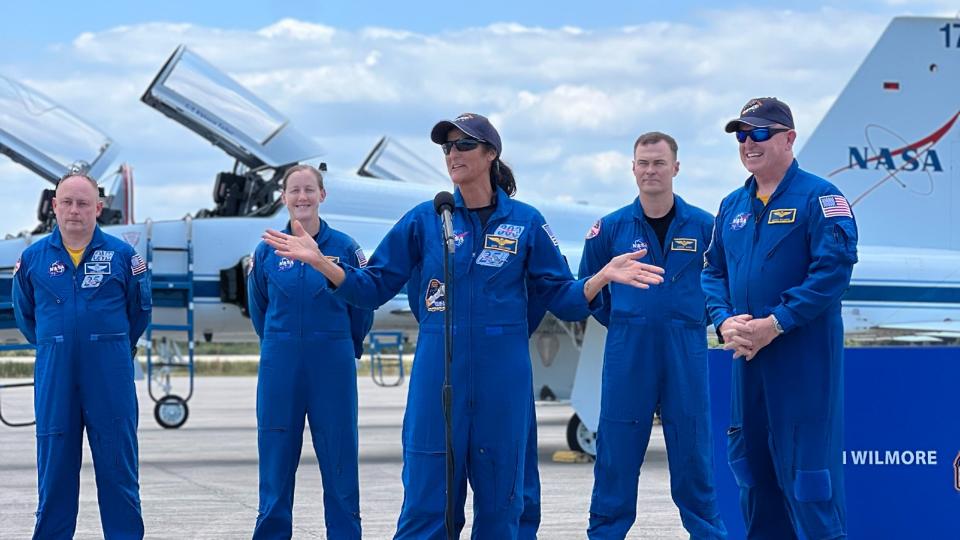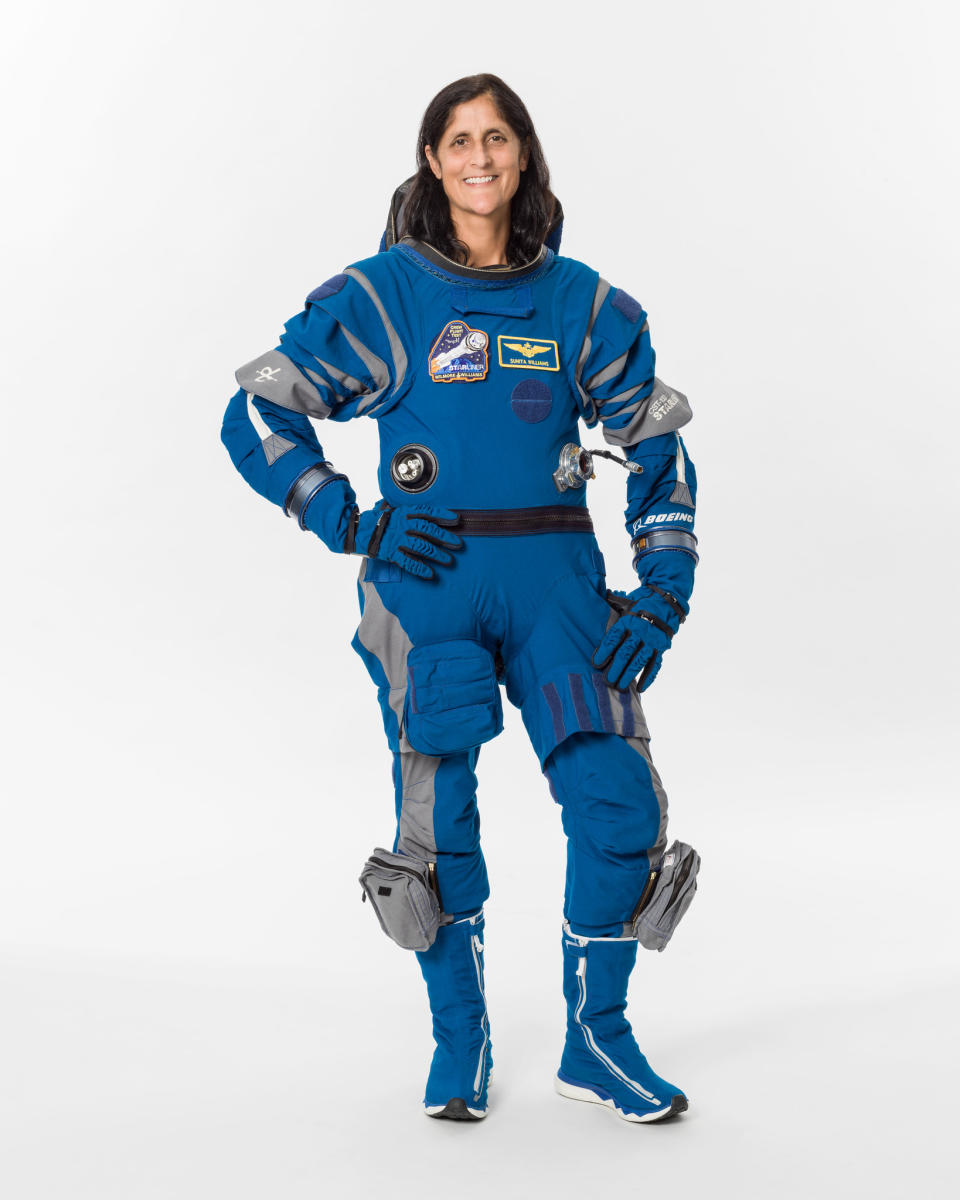Meet the crew launching on Boeing's 1st Starliner astronaut flight

Two NASA astronauts will soon make history as the first to launch into space aboard a Boeing spaceship.
Commander Barry "Butch" Wilmore and pilot Suni Williams are scheduled to launch to the International Space Station (ISS) on May 6, representing the first Crew Flight Test, or CFT, of Boeing's Starliner capsule.
The mission will see Starliner launch atop a United Launch Alliance (ULA) Atlas V rocket from Space Launch Complex-41 at Cape Canaveral Space Force Station in Florida at 10:34 p.m. EST on May 6 (0234 GMT May 7).
The pair will spend ten days in space on the orbiting lab before the crewed Starliner capsule returns to Earth, making a parachute and airbag-assisted landing in the southwestern United States. If all goes according to plan, this first crew flight test will set the stage for using the Starliner capsule — which can carry four astronauts or a mix of crew and cargo — for crew rotation missions to the space station.
Related: Boeing Starliner 1st astronaut flight: Live updates
Most recently, the astronauts completed a full launch-day dress rehearsal on Friday (April 26), according to a statement from NASA. They will now spend the next week working on last-minute preparations and training exercises.
Both Wilmore and Williams are veteran astronauts, having flown on two prior space missions to the space station. You can learn more about each of them below.
Barry "Butch" Wilmore

Barry Wilmore, also known as Butch, will serve as the commander of Boeing's first Starliner CFT. Wilmore is a 61-year-old U.S. Navy Captain who joined NASA as an astronaut candidate in 2000. He has accumulated a total of 178 days in space and logged 5 hours and 36 minutes of time in four spacewalks.
Wilmore hails from Mt. Juliet, Tennessee, where his parents still live today. He is married to the former Deanna Newport, with whom he shares two daughters, according to his biography from NASA. Wilmore has a Bachelor of Science degree and Master of Science degree in Electrical Engineering from Tennessee Technological University. He also has a Master of Science degree in Aviation Systems from the University of Tennessee and is a graduate of the United States Naval Test Pilot School (USNTPS) with over 8,000 flight hours and 663 carrier landings in tactical jet aircraft.
During his tenure as a fleet Naval officer and aviator, Wilmore completed four operational deployments, flying the A-7E and F/A-18 aircraft from the decks of the USS Forrestal, USS Kennedy, USS Enterprise and the USS Eisenhower aircraft carriers, according to his biography. His deployment aboard the USS Eisenhower with the "Blue Blasters" of Strike Fighter Squadron 34 (VFA-34) was his final combat mission. Prior to joining NASA, Wilmore was a Flight Test Instructor for the United States Air Force at Edwards Air Force Base, California.
Wilmore has two spaceflights under his belt. He previously served as a pilot on shuttle Atlantis' STS-129 mission to the ISS in 2009 and commanded Expedition 42 during a 167-day beginning September 25, 2014 through March 12, 2015. On his second mission, Wilmore performed three spacewalks to prepare the orbiting lab for new international docking adapters and future U.S. commercial crew spacecraft. He also completed a spacewalk with fellow astronaut Reid Wiseman to replace a failed voltage regulator.

Suni L. Williams

Sunita "Suni" Williams, who will pilot Starliner, was selected as an astronaut candidate in 1998. Prior to joining NASA, she served as a U.S. Navy Captain and has logged more than 3000 flight hours in over 30 different aircraft.
Williams was born in Euclid, Ohio, but considers Needham, Massachusetts her hometown. Her and her husband, Michael, enjoy spending time with their dogs and share various interests such as hiking and camping, according to her biography from NASA. The 58-year-old holds a Bachelor of Science degree in Physical Science from the U.S. Naval Academy, as well as a Master of Science in Engineering Management degree from Florida Institute of Technology.
When Williams was selected as an astronaut candidate in 1998, she was deployed aboard the U.S. Navy amphibious assault ship USS Saipan. Following her astronaut training, Williams worked in Moscow with the Russian Space Agency on the Russian contribution to the space station and with the first Expedition Crew. She later worked within the Robotics branch on the space station's Robotic Arm and the follow-on Special Purpose Dexterous Manipulator.
Williams has previously completed two stints aboard the space station, totaling 322 days in space and logging 50 hours and 40 minutes in spacewalks — the second most cumulative spacewalk time by a female astronaut. She first flew to the ISS on the space shuttle Discovery as part of Expedition 14/15 for a six-month stay from Dec. 9 2006 to June 22, 2007.
After her first flight, she served as Deputy Chief of the Astronaut Office. Then, in 2012, Williams returned to space for a four-month mission as Flight Engineer for Expedition 32 and Commander for Expedition 33. During her second long-duration mission, she performed spacewalks to replace a component that relays power from the space station's solar arrays to its systems and repair an ammonia leak on a station radiator. In addition to her time in space, Williams has lived underwater in the Aquarius habitat for 9 days as a crew member of NEEMO2.
